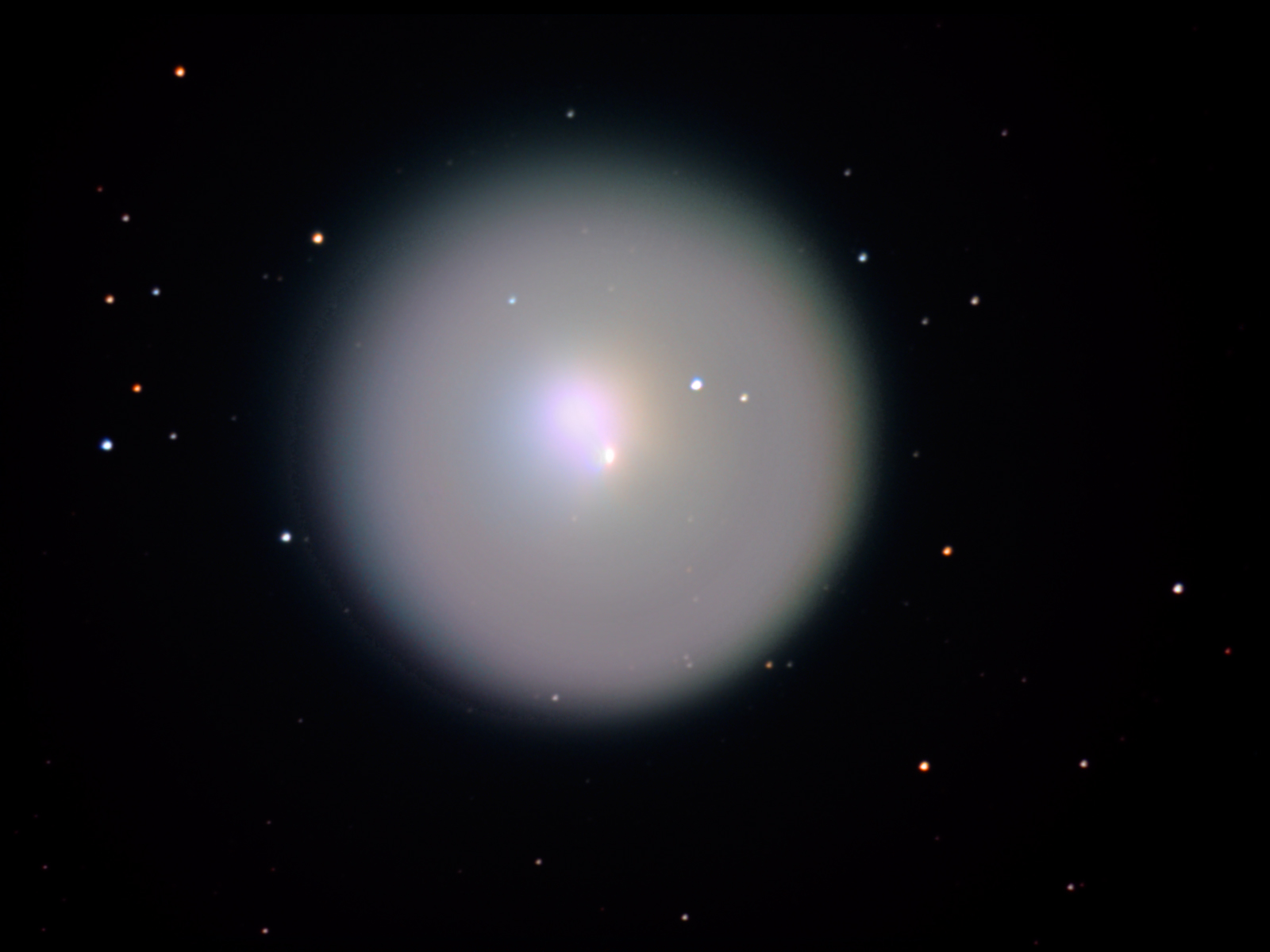
Comet 17P/Holmes

Taken October 28, 2007 Cold Spring Observatory Cold Spring, Kentucky
Image Credit: Fred Calvert / Cold Spring Observatory
Meade LX200 Classic @ f10 with SBIG ST2000XM CFW8
Exposure: LRGB 10 minutes each binned 1X1
Processed with MaxIm DL and Adobe Photoshop CS2
________________________________________________________________________________________
This image of comet 17P/Holmes was taken on November 8, 2007 and is the same scale as
the image above showing how the inner coma has grown. High clouds moved in during the exposures.
Comet Information:
Not long ago, many people thought that comets were a sign that something bad was about to happen to them. People didn't understand how objects in the sky moved, so the sight of a comet must have been very disturbing. There are many historical records and works of art which record the appearance of comets and link them with terrible events such as wars or plagues.
Now we know that comets are lumps of ice and dust that periodically come into the center of the solar system from somewhere in its outer reaches, and that some comets make repeated trips. When comets get close enough to the Sun, heat makes them start to evaporate. Jets of gas and dust form long tails that we can see from Earth. These tails can sometimes be millions of miles long.17P/Holmes has undergone an incredible brightening from magnitude 17 to magnitude 2 in less than 24 hours. 17P appears as an extra star in the northern constellation Perseus which can be see naked eye. Visible high and towards the northeast shortly after dark, the comet has an odd appearance. Its core is oblong and though it currently has no tail, it is completely surrounded by a thick ‘fuzzy’ coma.
Test Credit: Windows to the Universe